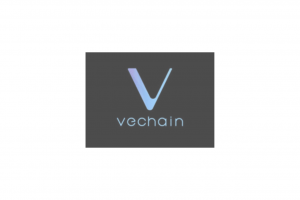Background on general trade through time
Trade goes way back, even before the discovery of fiat money people used to exchange goods for goods, a form of trade famously known as barter trade.
Barter trade was for a long time a means that seemed to work for the better part of the whole community.
It had its challenges, such as the fact that it was really hard to quantify the actual worth of goods, and also the fact that some trades did not really make sense because of the nature of the goods being traded.
One major limitation was the fact that one could only exchange goods for goods that were also in demand from the second party.
For example, if I wanted oranges and I had bananas, I would need to find someone with oranges who would be willing and interested in exchanging them for my bananas.
Because of these challenges involving exchange of goods for goods, the fiat money came to existence.
This made it easy to value the worth of goods by the use of paper sort of notes that were written the amount of goods and their value.
This was more effective as people could easily travel, and make different transactions more conveniently.
This, among other factors, gave rise to the introduction of a new industry, the Banking industry, where individuals were now using regulated currencies which were valued by the government.
The first bank in the United States of America was introduced by Morris’s nomination as a result of a proposal by Hamilton, and the Bank of North America, in Philadelphia around the early 1780s.
This seemed a bit late for that economy, considering other economies such the Great Britain, was already into the system of using banks, which was also where most United States citizens used to borrow money and other forms of credit from.
Introduction of trade with currencies gave rise to other systems such as the federal revenue system which ensured that the funds within the country were well regulated.
The currency introduced was the United States Dollar (USD) which was valued by two underlying assets, gold and silver.
Introduction of the USD made it possible for people to borrow money in the form of different kind of loans from the bank.
Such loans included mortgage loans, which are loans used to purchase real estate.
Loans were/are normally issued with an interest rate, which is basically the cost of holding the loan, and it’s one of the ways that banks made/make their profit.
The growth and development in this industry led to the introduction of one of the driving forces in the world’s economy, the Investment Sector.
This created a niche for businesses and companies, and until the 1900’s, companies were now able to go public (through Initial Public Offerings “IPO’s”).
Investors were then able to invest in companies through buying and selling of shares in different stock exchanges.
Causes of the shake up to new revolutions
The banking system is an industry that is deemed complex in its structure, forms, and regulations, and most of the larger population of people do not really understand how it really works.
Banking institutions took this advantage to manipulate the citizens and use it to their own advantage by hiking the levels of interest rates, and by controlling the overall inputs and outputs of the financial system.
This control power advantage was one of the biggest constituents that led to the collapse of the banking sector, during the great recession of the 2008 financial crisis, which was as a result of failed mortgage loans.
Banks were issuing mortgage backed securities, which were then traded through buying and selling in the stock exchange by investors.
These securities were basically valued by the worth of the houses and the default possibility of the ones being loaned.
These loans were graded from a scale of A to D, with A being the safest types of investments.
The manipulation came in when the mortgage backed securities were being rated AAA (which is most safest), whereas the actual truth was that these mortgages were given to people who had piled up loans and most of them could not pay off these debts.
Because of this, the mortgage backed securities were actually overvalued, and more and more investors were buying into them unknowingly.
This was also because the housing industry was booming and it was highly unlikely that it would collapse.
Later, when the debt holders were supposed to pay back the loans, they could not afford, and this resulted in the default credit crisis, where by these mortgages are not paid, thus came the crisis “bubble”, that resulted in the collapse of these mortgages.
It failed, and the whole economy failed, most of the the big banks such as JPMorgan Chase & Co., Morgan Stanley, American Express Co., Goldman Sachs Group Inc., U.S. Bancorp, Capital One Financial Corp., Bank of New York Mellon Corp., State Street Corp., BB&T Corp, Wells Fargo & Co., Bank of America, and others were highly indebted and some declared bankruptcy, and this caused a ripple effect worldwide.
The federal government imposed a new rule that restricted banks from taking part in investing and trading of assets within their own holdings, called “The Volker Rule”, this was a regulation was set to combat the possibility of a situation like that.
Also, another cause is the evolution of technology, and how it is rapidly being implemented in the banking and financial world.
Another cause is when the current currencies, specifically the United States Dollar is no longer backed by gold or silver, it’s worth is basically based on the faith that people put on it.
Governments and economies now print money out of nowhere.
Consequences as a result of the blockchain revolution
New ways of storing and transferring money without using the banks are being designed everyday, and that is why we see the evolution of blockchain technology.
Blockchain is the storing of transaction records, in multiple ledgers rather than one ledger, such as is the way with banks.
This resulted in an easier way of transfer of funds, as well as changing the way people store and transact.
On the other hand, the costs of these transactions will now be limited because of the absence of middle men such as banks and brokers.
The banking industry will now be at stake if they do not adapt to these new waves because this new innovation/s are disrupting the financial industry, as we can see more and more new ways of having the same services that the banks offer, but now in more efficient, convenient, and relatively better way.
Banks like Barclays have already implemented a blockchain department.
Imposing new rules and regulations, and reviewing current ones to favor such innovations as blockchain could be a start towards sustainability of the whole financial industry.
Running of financial transactions through blockchain might also affect the way the government controls the economy, because now they would not be able to handle and control these transactions with their monetary structures such as the central bank, therefore they would have to come up with a new way to control this, and the overall economy.
Finals thoughts on blockchain revolution
I think that blockchain technology will definitely disrupt the financial industry, maybe not soon as we may think, but in the long run it will.
We already see it’s implementation into the the monetary system, with the introduction of crypto currencies such as bitcoin, which is globally recognized as a means of exchange.
Cryptocurrencies have and will continue to integrate into to the system, just like the evolution of trade and money, because the rate at which technology and the financial world is growing, is exponential.
We just have to accept and adapt to it.




Pingback: How Factom (FCT) Blockchain Framework Solution Reduces Risks in the Cybersecurity Industry, Considering the Crypto Boom of 2017 - FinanceBeta
Pingback: Very Basic Understanding of Mining Cryptocurrencies Such as Bitcoin - FinanceBeta